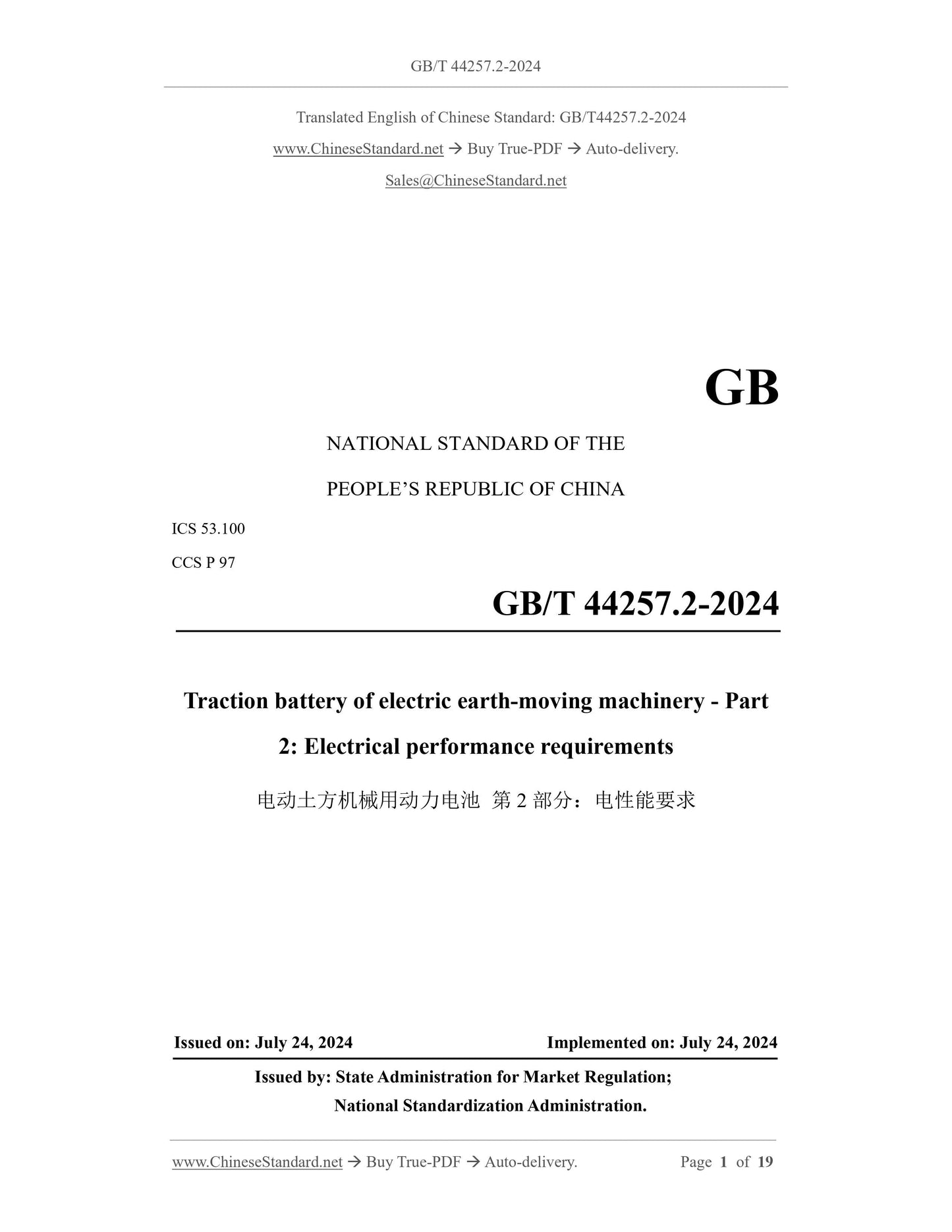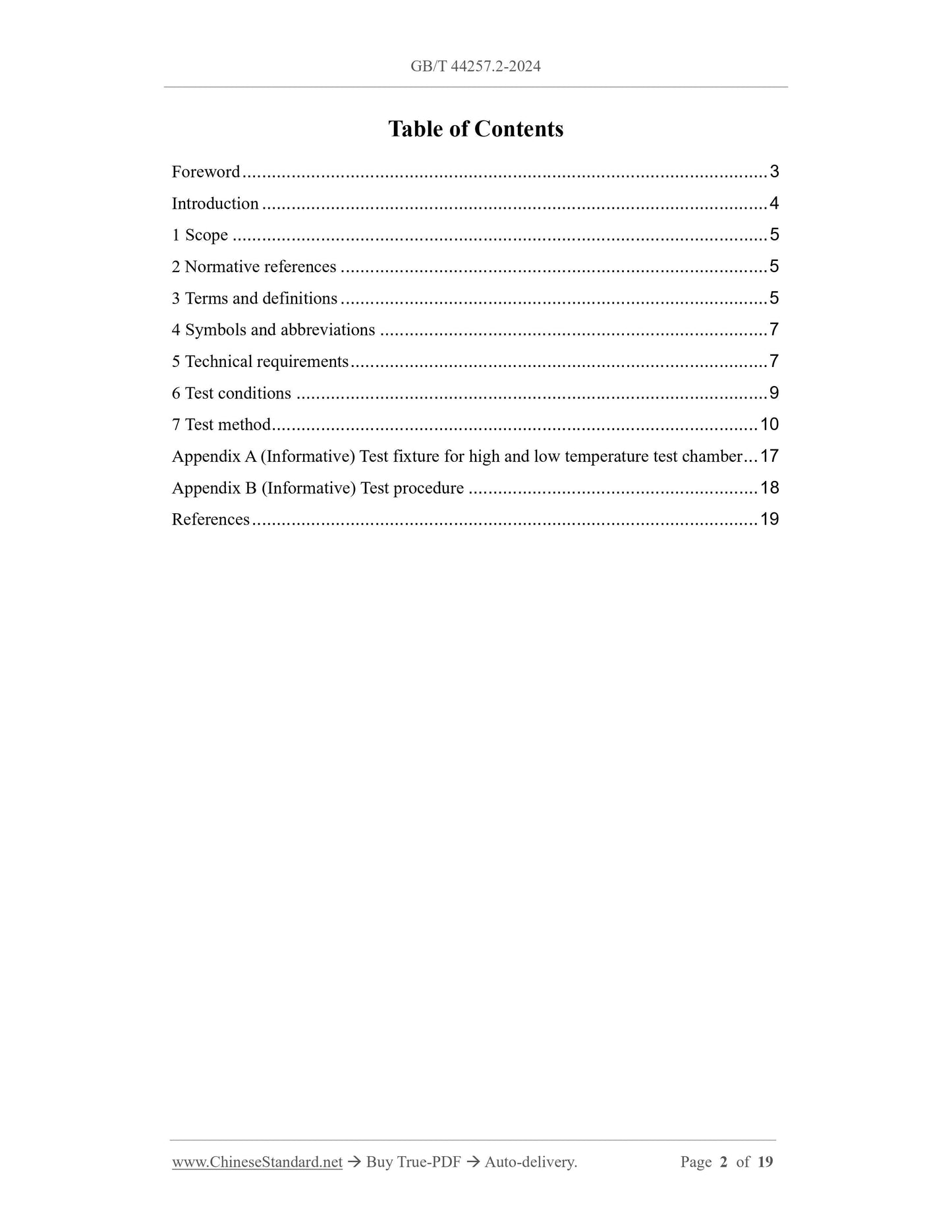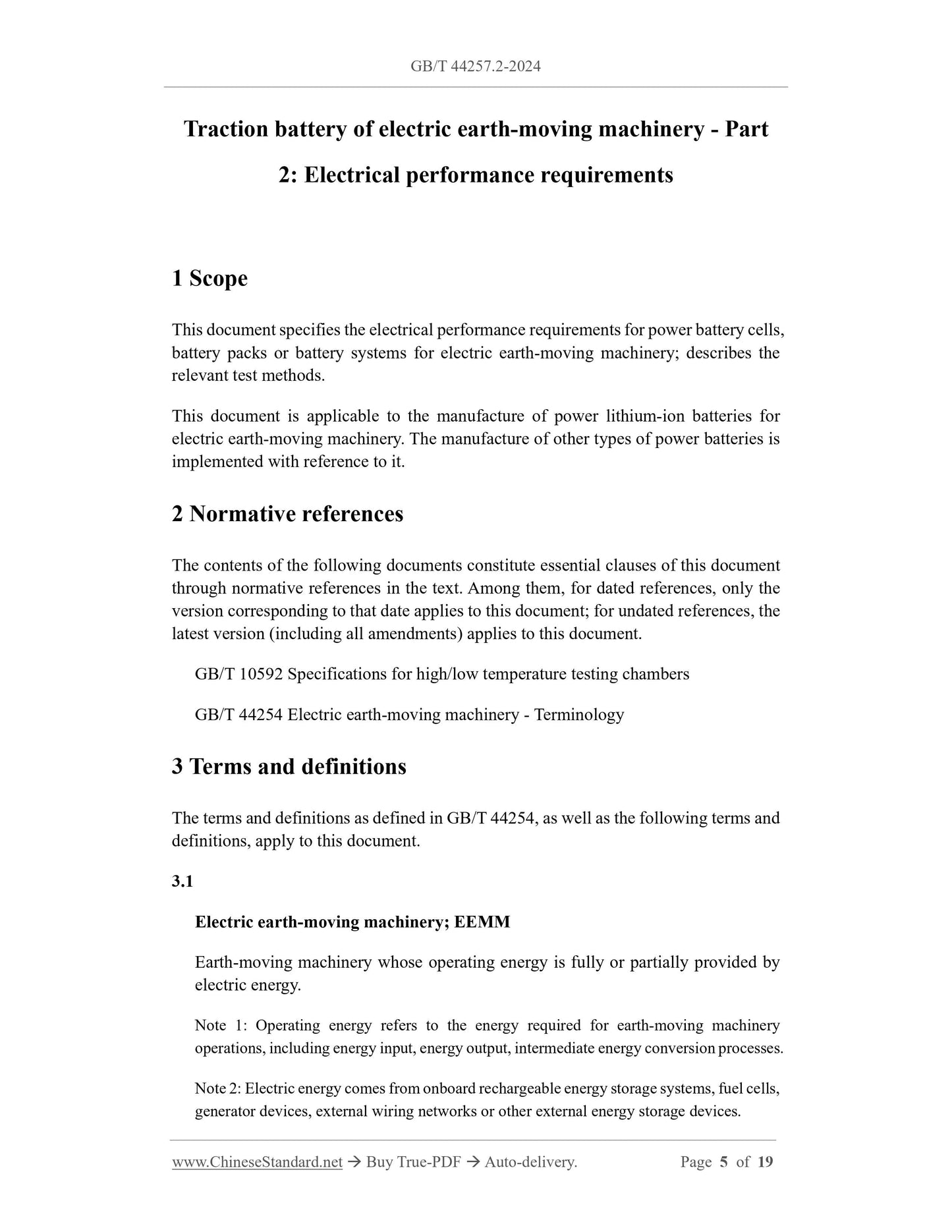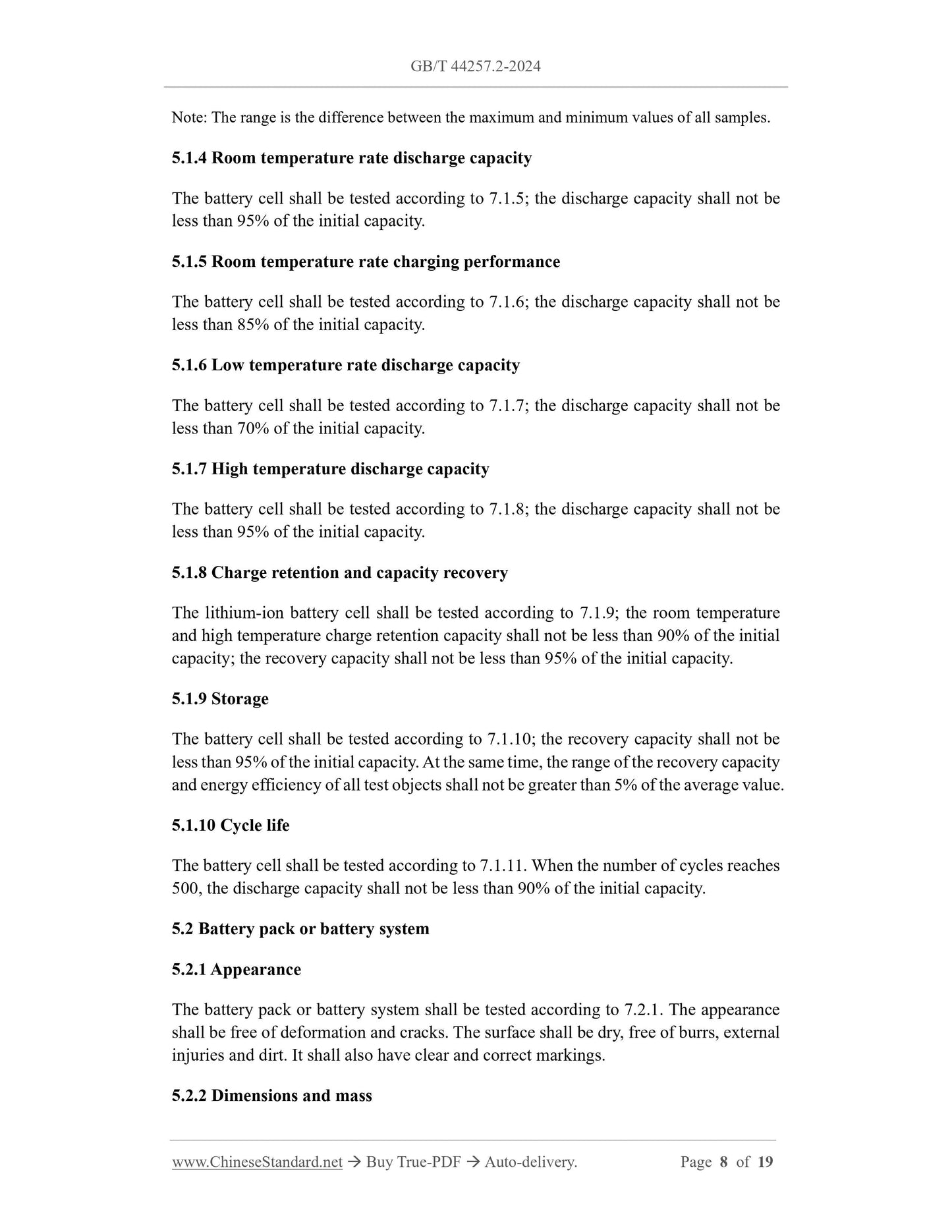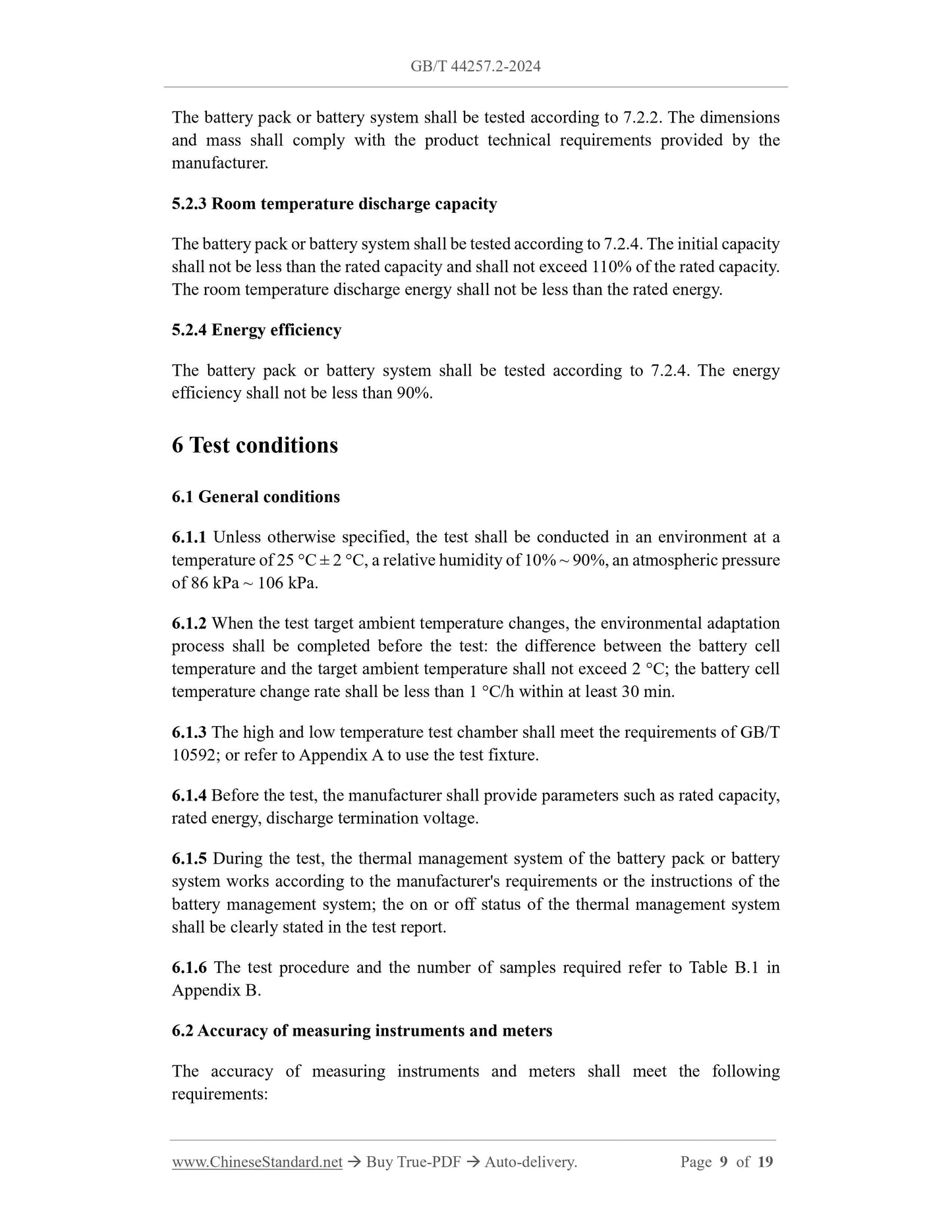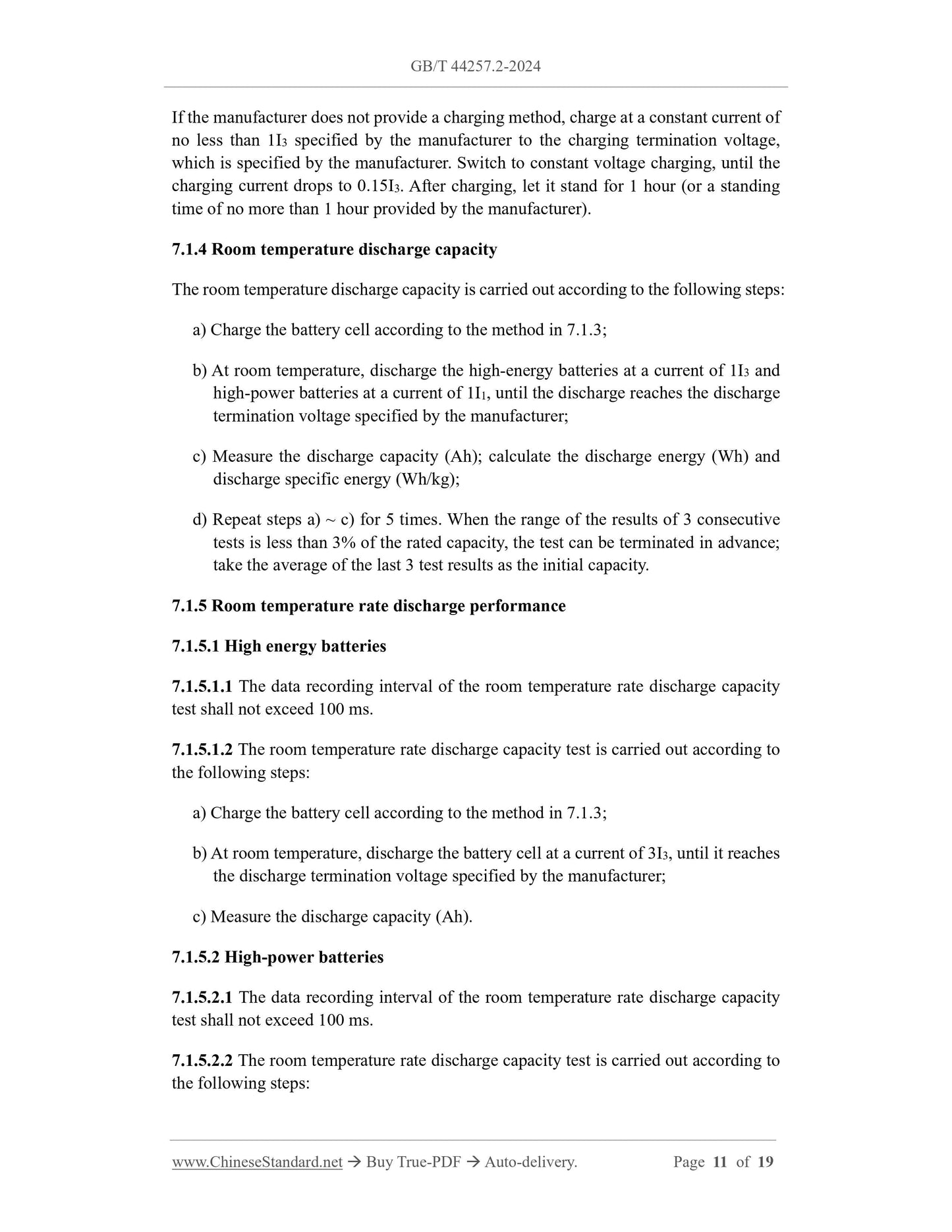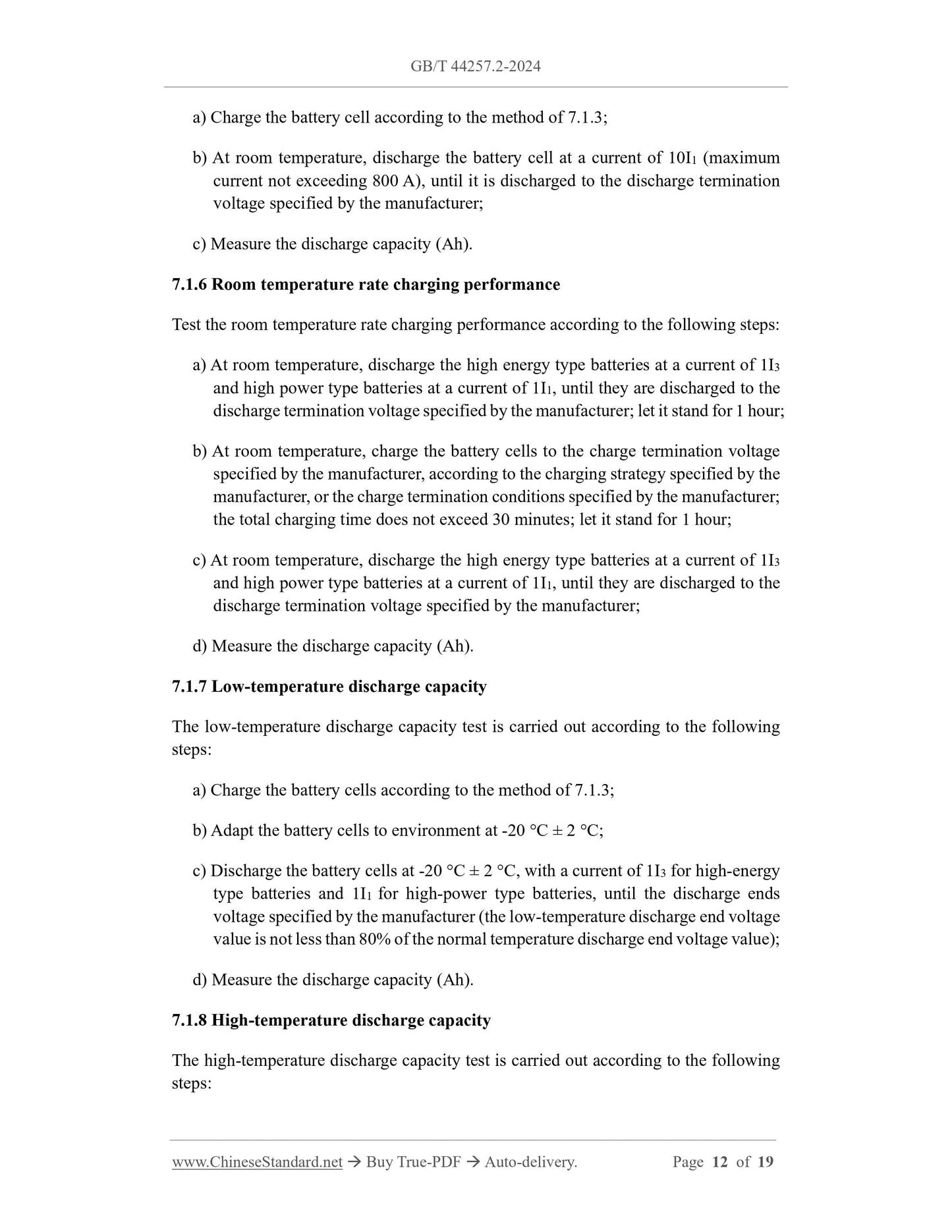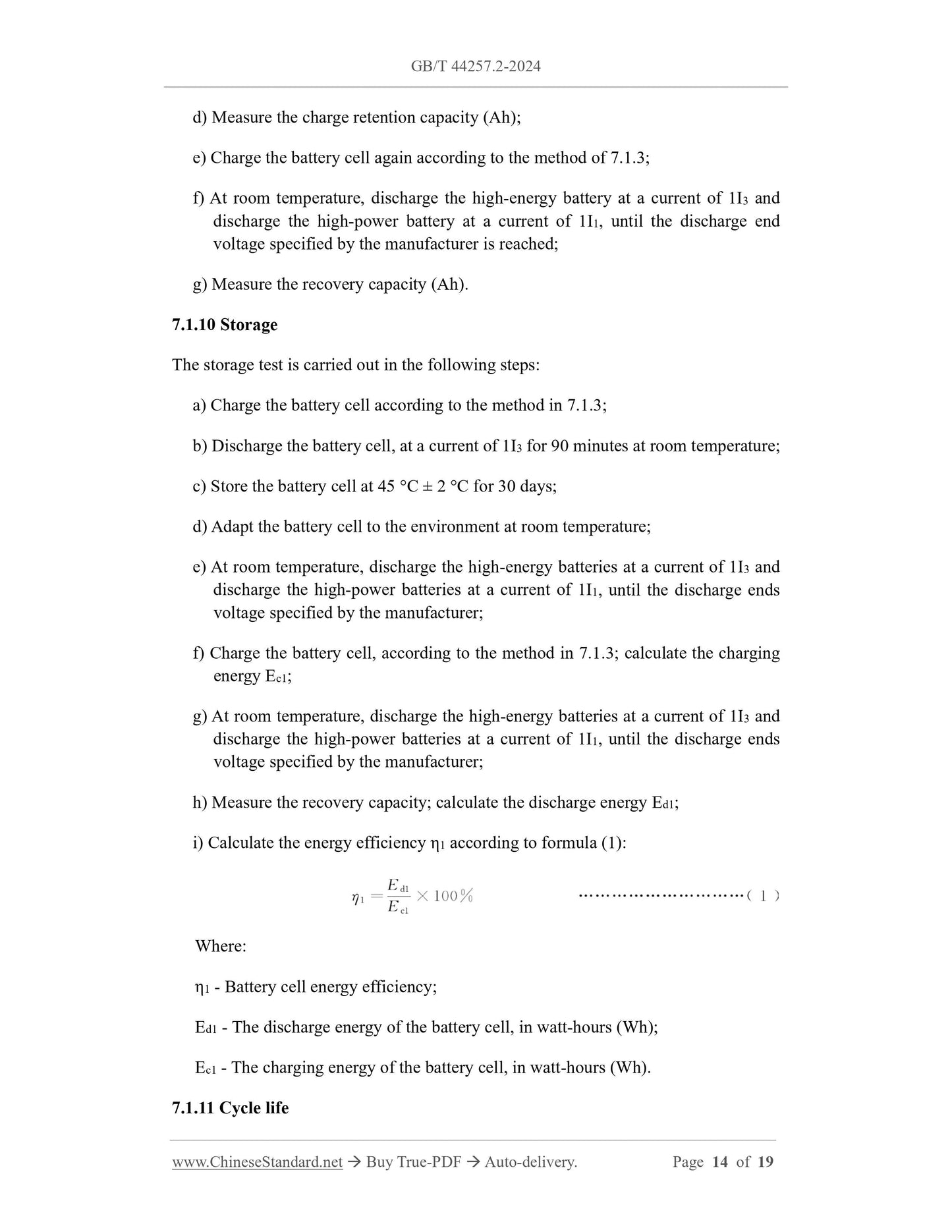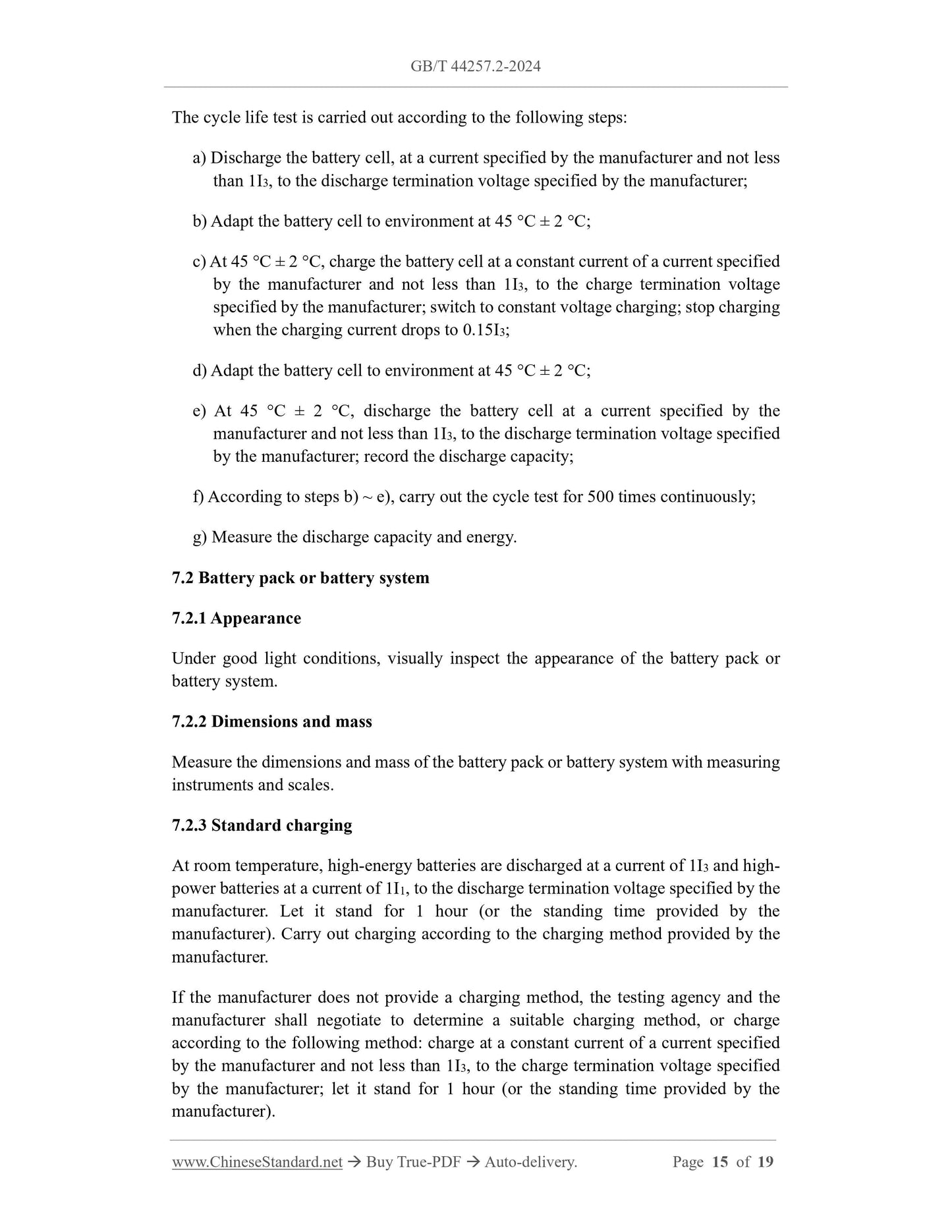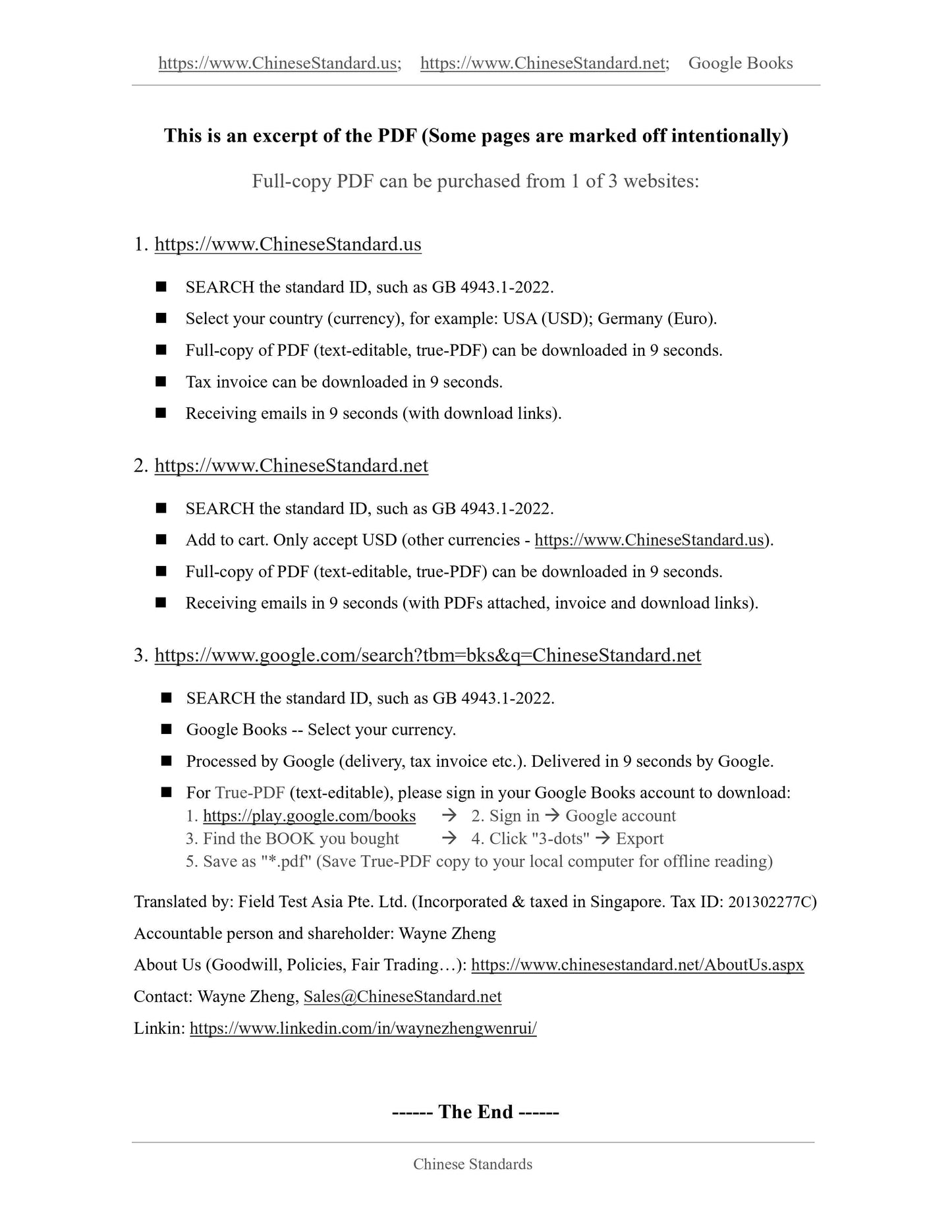1
/
of
10
www.ChineseStandard.us -- Field Test Asia Pte. Ltd.
GB/T 44257.2-2024 English PDF (GB/T44257.2-2024)
GB/T 44257.2-2024 English PDF (GB/T44257.2-2024)
Regular price
$320.00
Regular price
Sale price
$320.00
Unit price
/
per
Shipping calculated at checkout.
Couldn't load pickup availability
GB/T 44257.2-2024: Traction battery of electric earth-moving machinery - Part 2: Electrical performance requirements
Delivery: 9 seconds. Download (and Email) true-PDF + Invoice.Get Quotation: Click GB/T 44257.2-2024 (Self-service in 1-minute)
Newer / historical versions: GB/T 44257.2-2024
Preview True-PDF
Scope
This document specifies the electrical performance requirements for power battery cells,battery packs or battery systems for electric earth-moving machinery; describes the
relevant test methods.
This document is applicable to the manufacture of power lithium-ion batteries for
electric earth-moving machinery. The manufacture of other types of power batteries is
implemented with reference to it.
Basic Data
| Standard ID | GB/T 44257.2-2024 (GB/T44257.2-2024) |
| Description (Translated English) | Traction battery of electric earth-moving machinery - Part 2: Electrical performance requirements |
| Sector / Industry | National Standard (Recommended) |
| Classification of Chinese Standard | P97 |
| Classification of International Standard | 53.100 |
| Word Count Estimation | 18,196 |
| Date of Issue | 2024-07-24 |
| Date of Implementation | 2024-07-24 |
| Issuing agency(ies) | State Administration for Market Regulation, China National Standardization Administration |
Share
